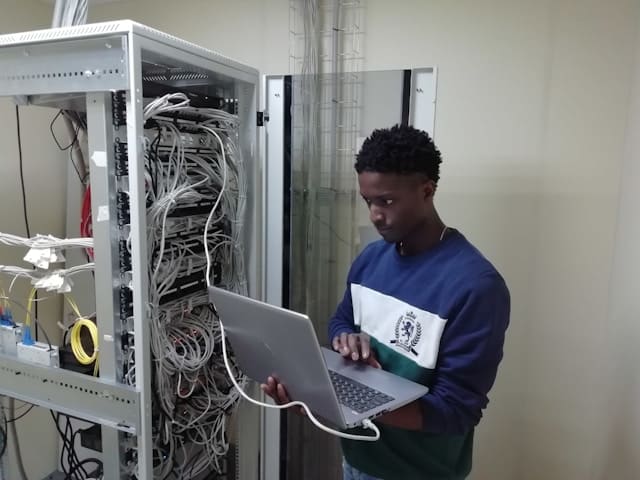Hello and welcome. We’re going to tackle a topic that has been a thorn in the side of digital society for a while now. We’re talking about misinformation and fake news. As the digital age evolves, so too does the spread of false content online. These falsehoods are not limited to social media platforms like Facebook and Twitter but have infiltrated almost all corners of the digital landscape. In today’s article, we’re going to look at the technologies that are used to combat this problem.
The Rising Tide of Online Misinformation and Fake News
Let’s start by understanding the magnitude of the problem. The digital age has brought us many benefits, it’s true. However, it also has enabled the spread of misinformation and disinformation at a rate and scale never seen before.
A lire également : What Are the Frontiers of Haptic Technology in Enhancing Virtual Interactions?
Fake news and misinformation online are not just about celebrity gossip or outlandish claims. They have serious real-world consequences ranging from health scares, political discord, and even violence. A report from the Global Disinformation Index estimates that advertisers, unknowingly, spend $235 million on websites that spread fake news.
People are increasingly getting their news from social media sites like Facebook and Twitter. Here, fact-checking is often overlooked, resulting in the spread of misinformation. The problem has been further compounded by algorithms on these platforms that tend to amplify sensational and controversial content.
A lire en complément : How Is Technology Empowering Citizen Science and Community-Based Research?
The Role of Technology in Spreading Misinformation
Technology, as we’ve mentioned, has played a significant role in the explosion of online misinformation. The use of bots to spread false content, algorithms that amplify said content, and the ease of creating and sharing content online are all contributors.
In a strange twist of irony, the same technology that has enabled the spread of misinformation is also part of the solution. As technology evolves, so do the solutions to combat fake news. Let’s take a look at the technological tools being employed to fight this battle.
Fact-Checking Technology to the Rescue
Fact-checking technology has come a long way since its inception. Thanks to advancements in artificial intelligence and machine learning, fact-checking tools can now process and verify information at a much faster rate, making them an essential tool in the fight against misinformation.
In the past, fact-checking was a laborious and time-consuming task done manually by journalists. Today, AI-powered fact-checking tools can analyze text, videos, and images for authenticity, freeing up journalists to focus more on their reporting.
Companies like Facebook and Twitter are already using these tools alongside their human content moderators. They are also making these tools available to users, enabling them to fact-check information for themselves.
The Power of Blockchain in Battling Falsehoods
Another technological innovation that is helping in the fight against misinformation is blockchain. Known for its use in cryptocurrencies, blockchain technology provides transparency and security, making it an effective tool in battling falsehoods online.
Blockchain-based solutions can help track the origin of news content, verify its authenticity, and retain a permanent, unchangeable record of it. This not only helps to expose fake news but also holds content creators and distributors accountable.
For instance, a startup company named "Proof" is using blockchain technology to authenticate news stories. This gives readers certainty about the origin and authenticity of the news they read.
Using Social Media Algorithms for Good
Lastly, let’s not forget the algorithms. They’ve been part of the problem, but they can also be part of the solution. Social media platforms like Facebook and Twitter are now using their algorithms to prioritize quality news content and de-emphasize misleading or false information.
These platforms are also leveraging their algorithms to provide better information to their users. Twitter, for instance, has employed its algorithm to direct users to authoritative sources during emergencies or breaking news events.
While technology alone can’t completely eliminate fake news and misinformation, it offers promising solutions. As we’ve seen, various technologies – from artificial intelligence to blockchain – are playing an increasingly vital role in this fight. Let’s continue to explore and develop these solutions, and do our part in curating a more trustworthy digital space.
Overcoming the Challenge of Deepfakes
In recent years, the rise of deepfakes has added a new level of complexity in the fight against online misinformation. Deepfakes, a term coined from “deep learning” and “fake”, are synthetic media in which a person’s likeness is swapped with another’s, creating highly convincing, manipulated videos.
Deepfakes have been used to spread misinformation and disinformation, causing major global concerns. They have the potential to cause significant damage, as they can convincingly depict individuals saying or doing things they never did. This makes them a potent tool for those seeking to spread fake news and influence public opinion.
To combat this, technology companies are developing deepfake detection tools powered by artificial intelligence. Google, for instance, has created a large dataset of visual deepfakes to help researchers build and test detection tools. Similarly, Facebook has launched the Deepfake Detection Challenge, which aims to spur the development of new technologies to detect manipulated content.
Moreover, researchers are exploring the use of blockchain technology, once again, to authenticate digital media. By creating an immutable record of a digital asset’s history, blockchain can help verify the source and authenticity of a video, making it harder for deepfakes to be passed off as real.
Despite these technological advancements, the fight against deepfakes is a battle of cat and mouse, with detection technologies trying to keep up with increasingly sophisticated deepfake creation techniques. However, with continuous development and research, we can hope to stay one step ahead in this fight.
Conclusion: The Ongoing Battle Against Online Misinformation
As we have discussed, online misinformation and fake news present a significant challenge in our digital age. However, it is encouraging to see technology being leveraged in creative and powerful ways to combat this issue. From AI-powered fact-checking tools to blockchain-based content verification, technology is providing us with new and effective ways to verify information and promote truthfulness online.
That being said, technology is only one aspect of the solution. It is necessary for individuals, institutions, and societies to remain vigilant, critical, and informed in their consumption of digital content. Media literacy education and regulatory measures, in tandem with technological solutions, are also crucial in this fight against online misinformation.
While it is an uphill battle, the progress we’ve made gives us reason to be optimistic. As we continue to innovate and adapt, we can look forward to a digital landscape where truthfulness and authenticity are the norms rather than exceptions. The fight against online misinformation and fake news may be a long one, but with the right tools and approaches, it is a battle that we can, and must, win.











